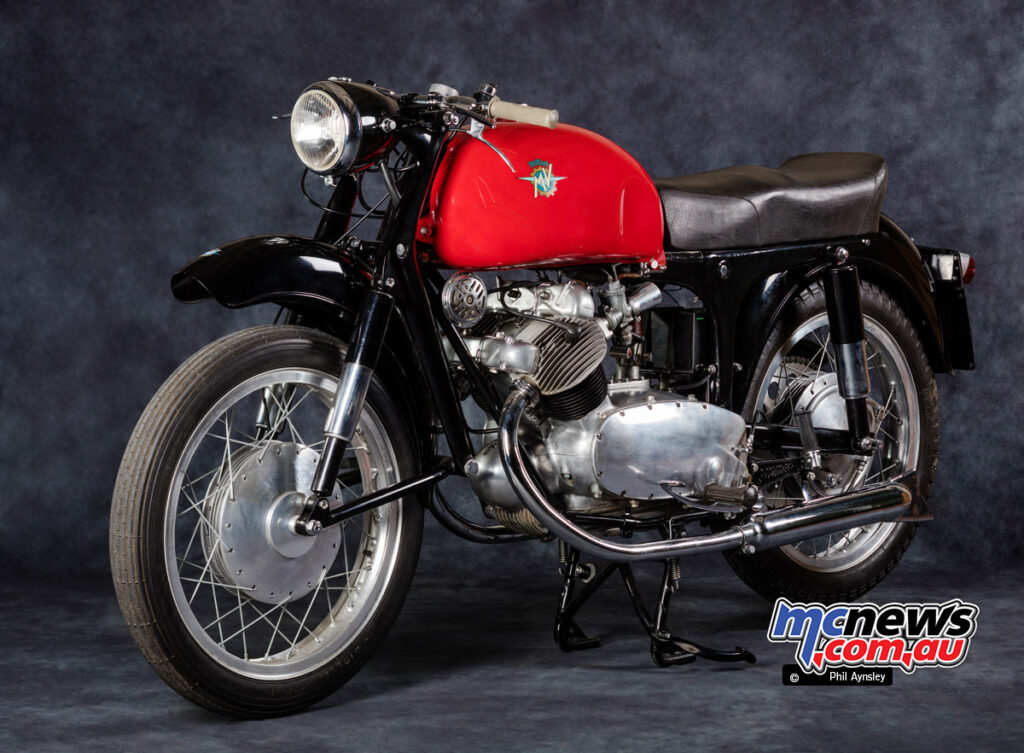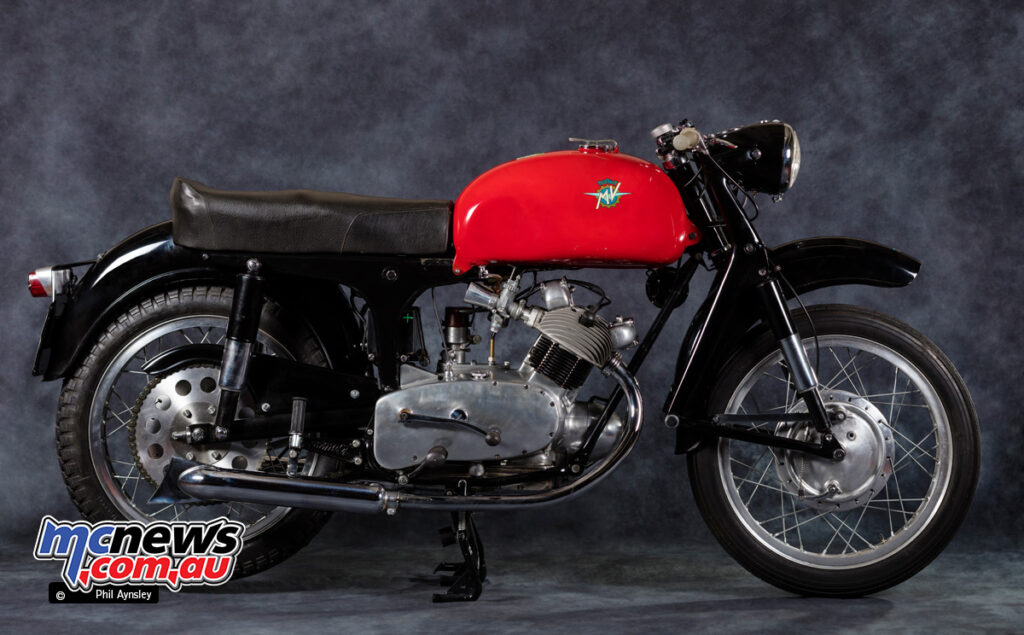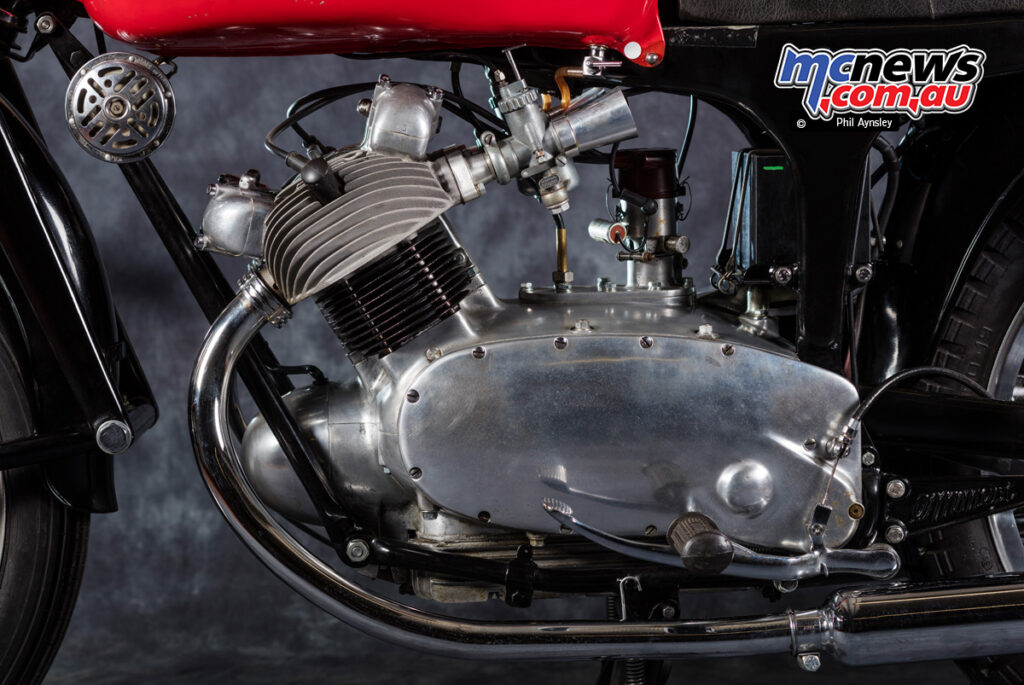MV Agusta 300 Bicilindra
With Phil Aynsley
Count Agusta and Giuseppe Gilera were fierce rivals during the 1950s, so after Gilera introduced their B300 twin in 1952 it was deemed necessary for MV to counter it. Enter the 300 Bicilindra prototype.

The bike was shown at the Milan Show in 1955 with production due to start the following year. However the design by Carlo Gianini – who was also responsible for the Gilera Rondine and ’53 Guzzi 500/4 was deemed too expensive for production.
This prototype sat abandoned in a corner of the factory until 1986 when it was purchased by Mr Elli, along with many other bikes and spares. He held onto it until 2013 when he sold it to Ginetto Clerici who then (with Elli’s help) restored it.

This proved to be no easy task as the motor never had any internals! However both Clerici and Elli were familiar with designer Gianini and knew the intended form of the internals. Drawings were eventually unearthed with the assistance of Erico Sironi, director of the MV museum.
The standout feature of the motor is the valve operation. Cam drive was via two large gears, one above the other and driven from a gear on the crankshaft between the cylinders. The top gear featured a single cam lobe on either side, against which lever followers operated short valve actuating pushrods that were parallel in one plane to the valves, set at a 90-degree included angle in the hemispherical cylinder head combustion chamber. The pushrods were very short and therefore light and strong.

The distributor is vertically mounted behind the cylinders, as per the Rondine. An electric starter is incorporated and the Earles fork is specific to this bike.
Official 1955 figures (which are not thought reliable) were 20 hp at 8000 rpm, 140 kg and 170 km/h top speed. More realistic figures are 18 hp (with 8000 rpm only being obtained in neutral), 171 kg and 140-145 km/h.
After several years work the bike was started and is now in running condition. A 350 cc DOHC racing version was built in 1955 but its 46.5 hp at 12,000 rpm wasn’t an improvement over the existing 350 racer so it was also shelved. It can be seen in the MV Agusta Museum.
Source: MCNews.com.au













